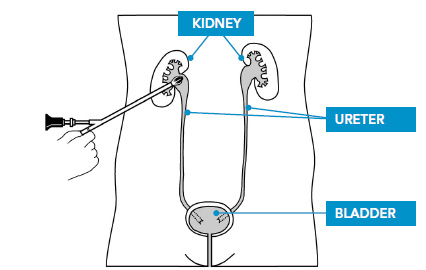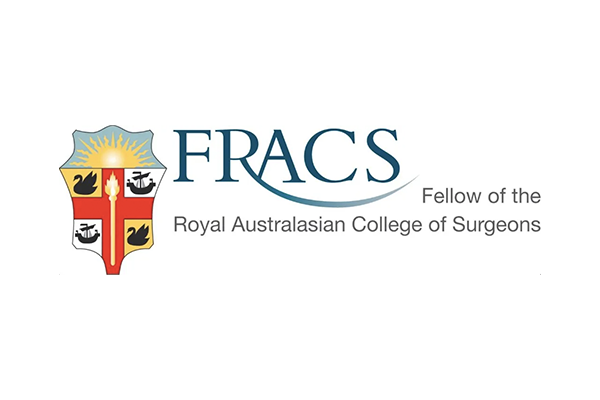Percutaneous Nephrolithotomy (PCNL)
Percutaneous removal of kidney stones (PCNL) is keyhole surgery. Under general anaesthetic the stone is removed by passing a small telescope through your side directly into the kidney. The stone is broken up and the fragments are removed.
Before your operation
The operation and outcomes will be explained to you by your Urologist. When you feel comfortable that you understand what is to be done and have had all your questions answered you will be asked to sign a consent form.
Blood test / Urine test
A blood test will need to be performed and a urine sample may need to be taken 4-5 days prior to surgery. Your surgeon will give you a form to take to the laboratory to have these tests done.

Operation day
A small tube is inserted up the ureter via a telescope passed into the bladder. Then you are positioned face down and a small keyhole incision is made into the kidney using x-ray guidance. A Radiologist is present for this part of the operation to help gain access to your kidney. A telescope is then passed into the kidney, the stone is located and broken into pieces using a laser.
When you wake up:
- Nephrostomy - a small tube on your side draining urine into a bag, usually removed the following day
- Catheter - tube in the bladder draining urine, also removed the following day.
Recovery
You will be in hospital 1-2 nights after surgery.
On the day after surgery, a further x-ray is normally done to assess stone clearance. If the x-ray is satisfactory, the tube in your kidney and catheter in your bladder will be removed.
There is often some leakage from the kidney tube site for 24-48 hours after the tube is removed. This is nothing to be concerned about and you will be provided with some dressings to take home.
Expected symptoms
After surgery you may or may not experience the following symptoms
Blood
It is common to have blood in the urine. Serious bleeding requiring further surgery is rare.
Stones
Sometimes, not all stones are able to be removed from the kidney
Access
It may not be possible to gain access to the kidney, resulting in the need for a different type of surgery such as
ureteroscopy
or
lithotripsy
After discharge
If a stent (tube between kidney and bladder) is inserted, you will be informed before your discharge when the stent needs to be removed.







